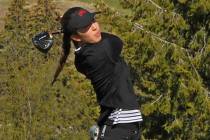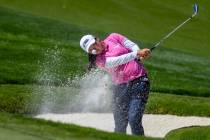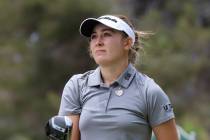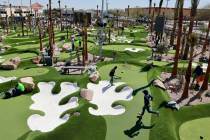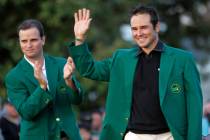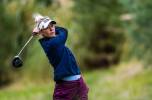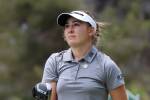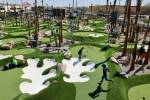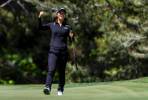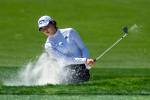Breaking down components leads to effective putting practice
Putting represents 43 percent of the game of golf but, generally speaking, it is horribly misrepresented in practice. The average golfer will take two maybe three golf balls to a putting green and simply try to make putts.
This doesn't work because the green is being used as a feedback device. This means that if a putt is made, the thought becomes, "I must have done something right," and if a putt is missed, the opposite thought occurs. Even on a Tour-quality putting surface, there are irregularities such as footprints, so it is not an appropriate feedback device.
The key to practicing efficiently is to break putting down to its individual components and practice them very concisely. The components that will be concentrated on for this article are posture, path, face angle and speed. These can be worked on easily and in the comfort of your own home. In fact, 85 percent of a putting practice session should be done indoors.
First thing to work on will be posture and general setup. To do this you will need some sort of a mirror on the floor; I use a mirrored tile that can purchased at any home-improvement store.
It is essential to hinge from the hips so that the hands are hanging from the shoulder blades and the eyes are over the golf ball. This will become a constant self check because if the eyes are not over the ball, a visual aim angle will be present which will cause consistency issues.
Next, to work on path, use some form of feedback device. Something is needed to reference face angle in relation to the path of the putter. It doesn't have to be an elaborate device -- a piece of string, lines on the carpet or lines on the tile floor will work fine.
When working with the path device, work very slowly and use the large muscles of the shoulders as the power source, not the small muscles of the hands, wrist and forearms. Take the putter back and hold, checking the amount of face rotation, then take the putter forward and hold. The more face rotation occurring through impact, the poorer you will putt.
To work on face angle, all that is needed is a permanent marker and some golf balls. Simply draw a line around the equator ball and roll putts. This becomes a device to see if the face is square at impact.
When rolling putts, the ball should roll end over end producing a solid line as it rolls. If there is any wobble present, the face is not square at impact; alternate between the path device and rolling golf balls until the face can be returned to impact square.
Believe it or not, when working on the above elements the session should last only about 15 minutes. Short concise sessions that are followed through week after week will lead to the fastest results.
For example, Monday work on setup, Tuesday work on path, etc. This will get a putter in your hand every day if only for short periods. No longer feel like you have to go to the golf course and practice.
If you do get an opportunity for a practice session at the course, the only thing that should be worked on is speed. Set up a speed drill called the 20-foot drill; all you will need is two tees and three golf balls.
Place the tees six paces apart. One tee will represent the target and the other where the golf ball will be hit from.
It is important to not use a hole for the drill as we are trying to see how far past the hole the ball will run. Imagine a semicircle on the back side of the hole; this will represent the safety zone. The goal of the drill becomes to get 10 consecutive balls into the safety zone.
With this mindset, improvement will follow. Best wishes.
Matthew Henderson is a Class A member of the PGA of America and has been teaching golf since 2003. He is currently an instructor at the Tour Academy at TPC Las Vegas. Prior to joining the Tour Academy, he traveled the country as an instructor for Dave Pelz, teaching clinics in more than 15 states. He attended the University of Nevada, Las Vegas, where he graduated with a bachelor's degree in leisure sciences with a concentration in professional golf management.








